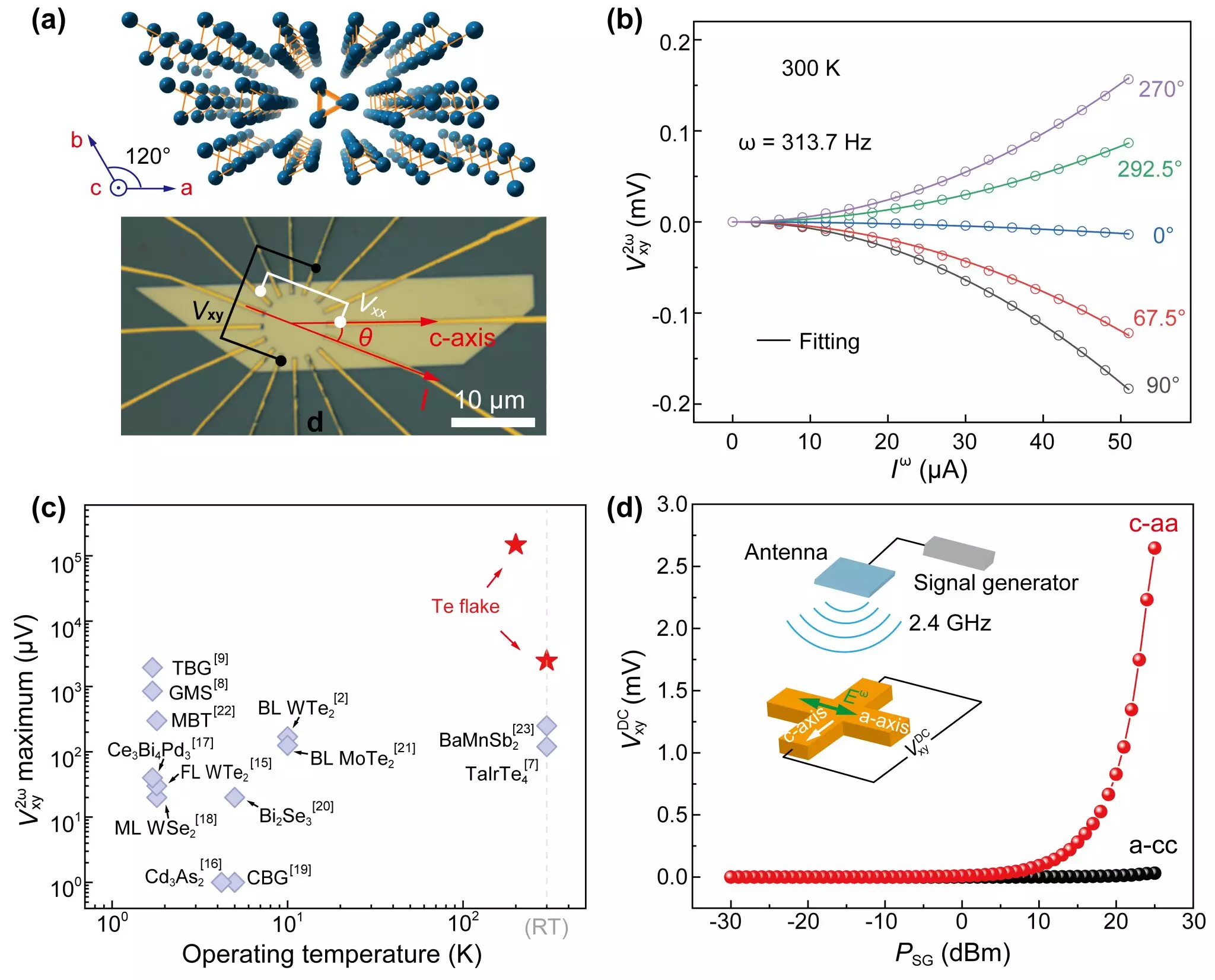Recent advancements in material science have shed light on the nonlinear Hall effect (NLHE), a phenomenon that opens new avenues in electronic applications. Researchers have now observed remarkable NLHE and wireless rectification effects at room temperature in tellurium (Te), an elemental semiconductor, marking a significant leap forward in this field. This discovery, published in **Nature Communications**, holds promise for various innovative technologies, including energy harvesting and wireless charging devices.
Historically, the exploration of NLHE has encountered several roadblocks, particularly the limitations in available materials. Most notably, previous demonstrations of NLHE occurred at low temperatures, thereby restricting their commercial viability. Prior to this work, materials such as Dirac semimetal BaMnSb2 and Weyl semimetal TaIrTe4 exhibited NLHE, but with constrained voltage outputs and limited adaptability. The challenges surrounding low Hall voltage outputs have left researchers searching for higher-performing systems that function efficiently under standard environmental conditions.
Tellurium presents a unique opportunity, characterized by its one-dimensional helical atom chains, which disrupt the inversion symmetry essential for efficient NLHE. The recent study led by researchers from the University of Science and Technology of China (USTC) indicates that Te’s structural properties allow for a significant NLHE at room temperature. In their findings, researchers noted that Te thin flakes are capable of producing Hall voltage outputs that can be modulated by applying external gate voltages, achieving a remarkable maximum second-harmonic output of 2.8 mV—an output that outstrips previous records by an entire order of magnitude.
The discovery of pronounced NLHE in Te is primarily attributed to extrinsic scattering phenomena, which significantly contributes to Hall voltage generation. The researchers identified that the thin flake structure of tellurium plays a pivotal role in surface symmetry breaking, enhancing its optimal performance. Such findings reveal a complex interplay of underlying mechanisms that govern nonlinear transport in solid materials and highlight the potential for high-efficiency electronic applications.
Further investigations enabled the research team to explore the wireless rectification capabilities of Te by introducing radiofrequency (RF) signals as a substitute for traditional AC currents. This innovative approach resulted in stable rectified voltage outputs within an extensive frequency range from 0.3 to 4.5 GHz. Unlike conventional rectifiers that rely heavily on p-n junctions, the Hall rectifier derived from Te’s properties yields a broadband response under zero bias, making it exceptionally advantageous for future electronic devices.
The insights garnered from this study mark a pivotal moment in the quest for practical applications of nonlinear Hall effects. By dissecting the mechanisms at play in tellurium, researchers have not only expanded the understanding of nonlinear transport phenomena but also paved the way for the development of efficient electronic devices. As the research led by Prof. Zeng Changgan and Associate Researcher Li Lin unfolds, the potential applications promise to reshape the landscape of energy generation and use, positioning tellurium at the forefront of next-generation electronic materials.


Leave a Reply
You must be logged in to post a comment.